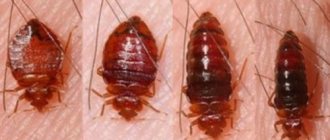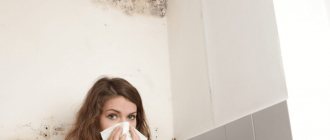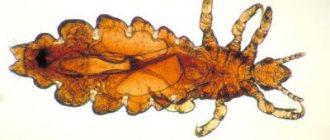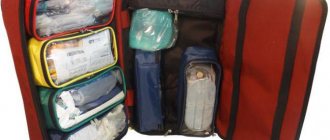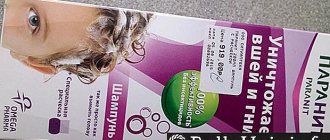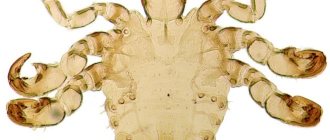Many myths exist around head lice. The first myth is that these parasites can only attack people who do not observe good personal hygiene. The second myth is the popular claim that lice are no longer a problem in the 21st century.
Pediculosis in children / photo: postirke.ru
Both the first and second statements are untrue, says lugaland.com. Lice can settle in the hair of any person, despite the maximum care for personal hygiene. To this day, they represent a fairly large problem that children most often face.
Lice (pediculosis) in children - when is the risk of infection most likely?
Head lice (medical - pediculosis) are most often found in kindergartens, schools and other institutions where there are many children at the same time who become infected while playing together. Each year there are two peak seasons for head lice. The first is the beginning of the school year, when children return from summer camps and bring to school various bacteria and parasites that were transmitted to them during games and overnight stays at camp. The second season is winter, when children begin to wear scarves and hats, thanks to which lice can easily move from head to head.
How to recognize nits
If you manage to get rid of lice, this does not mean that the person is completely healthy. There could be parasite larvae left on his hair. You need to know what nits look like. When viewed with the naked eye, they most likely resemble white dots scattered throughout the hair. Nits on hair can easily be confused with dandruff.
If you examine them with a microscope, you can see small elongated, round capsules. Body lice and head lice nits are usually no more than 0.8 mm long. Their diameter is approximately 0.4 mm. In pubic lice, nits are no more than 0.6 mm.
In the lower part of the body there is a small formation of the same substance as the shell. It resembles a wide belt that tightly clasps the hair. There is a flat lid at the top. When hatching, the larva pushes it out.
Without a microscope it is almost impossible to see the cap. It is also impossible to say for sure whether the larva has already hatched from the nit or not. Since the shell is securely attached to the hair, it can only be removed intentionally using a comb or manually. The nit itself does not fall off, except perhaps along with a hair.
If you know what lice and nits look like on humans, the fight against them will become more effective and fruitful.
How can you get head lice?
Children can become infected with lice at school and kindergarten / photo: vseodetyah.com
It is known that lice are more likely to appear on girls' hair - this is because girls often hug when they meet, use each other's combs and borrow various decorations such as headbands or hair ties. The number of head lice is not affected by hair thickness or length. It's worth knowing that lice cannot jump or fly, so it takes direct contact between two people to become infected with head lice, or for a child to come into contact with an object that has a louse on it.
Effective methods of control
Each nit is covered on top with a protective shell that is resistant to moisture and special preparations. For this reason, it is much more difficult to deal with nits than with living adults.
If men and young children have head lice, the easiest way to get rid of the parasites is to completely shave the hair on the head. For aesthetic reasons, this procedure is not suitable for everyone, so there are a fairly large number of other methods of combating nits and lice.
A female louse that has reached the adult stage is immediately ready to reproduce
Folk remedies
Considered safer for humans than chemicals. The most popular include:
- Lemon or cranberry juice. It contains a large amount of acid, which can destroy the nit shell. Lice with this effect become less mobile. If you wet your hair with juice for several days, then you can easily comb out lice and nits using a comb.
- Onion or garlic. These vegetables contain a caustic substance that has a detrimental effect on parasites. It is necessary to squeeze out the juice of onion or garlic, apply to hair, and keep under a plastic bag for 3-4 hours. Then rinse and comb your hair thoroughly.
- Sunflower and lavender oil. Add a few drops of lavender oil to sunflower oil and apply this mixture to your hair. Cover your head with a plastic bag and keep it there for an hour. The oil film prevents insects from breathing, which leads to their death.
Treatment with folk remedies takes a long time and does not always give positive results.
Medicines
Similar products for killing lice and nits are special shampoos and solutions for treating hair.
The most effective among them are:
- shampoos “Pedilin”, “Paranit”;
- aerosols “Nuda”, “Para Plus”;
- emulsion "Medifox";
- cream "Nittifor"
Often, medicines come with special combs used to comb out lice and nits. They have metal teeth with special notches. The gap between the teeth is negligible, which allows you to trap nits and lice.
Removal using a comb
The rules for using a comb are very simple. After treating your hair with special products, you need to divide it into thin strands. Combing is done from roots to ends along the entire length of the hair. To ensure that insects are visible, it is better to perform this procedure over a white cloth.
Using the comb is absolutely safe and has no contraindications. It can also be used for preventive purposes by combing your hair once a week to detect parasites.
To completely get rid of lice and nits, a complex treatment method is most often used, including chemicals and mechanical means. Like any other disease, head lice is easier to prevent than to cure. To do this, it is enough to follow basic rules of personal hygiene.
What lice medications should I use?
Lice are parasites that are difficult to get rid of because they multiply very quickly. The human louse lives from 7 to 10 days, but in 24 hours it can lay about 10 eggs, so it is worth starting control as early as possible to effectively get rid of them.
If a child is infected with head lice, then you should go to the pharmacy and choose a suitable shampoo or anti-lice spray, for example, Hedrin Raz Gel. This drug will take effect just an hour after application to the scalp and eliminates both adult lice and nits at all stages of development. A product like Pipi Nitolic comes with a thick comb that will help remove dead parasites from your baby's hair.
Places of main accumulation of nits and lice / photo: ytimg.com
What color are dry and live nits?
Upon careful examination, you can distinguish live nits from dry ones depending on what color they are. Live nits are white with a slight yellowish tint. When hit by a ray of light, they sparkle slightly. Dry nits are characterized by a dirty yellow dull color.
When you try to crush a living nit, a characteristic click is heard, which is made by the bursting of the protective shell. Dry nits remain tightly attached to the hair, but when they are crushed there is no click.
Nits on hair look like white dots that can easily be confused with dandruff. For this reason, many people with head lice delay treatment. If in doubt, it is best to consult a specialist to recognize the type of disease and select medications. You can independently distinguish nits from dandruff by a number of characteristic signs:
- Nits have a definite oblong, rounded shape and are approximately the same size. Dandruff is shapeless flakes of dead skin that vary in size.
- Nits are located closer to the roots of the hair. Dandruff can be distributed along the entire length of the hair and is noticeable on clothes of black shades.
- Nits are well attached to the hair. It takes effort to remove them. Dandruff can be easily brushed off with your hand.
- Itching with pediculosis is severe and painful. If dandruff is present, only slight irritation of the scalp is felt.
Dandruff only causes inconvenience to the person himself and does not pose a threat to others. Pediculosis is a parasitic disease, so it is important to determine the presence of lice and nits in time in order to take measures to destroy them.
Other methods of getting rid of lice
To prevent the appearance of head lice during an epidemic, it is necessary to use medications and regularly check the condition of the child’s scalp and hair. It is necessary to explain to the child that during this period he does not touch the hair of friends and does not exchange hats, scarves and hair accessories with them.
After removing lice, it is important to monitor the child and the condition of his hair / photo: medaboutme.ru
It is also necessary to wash bed linen, towels and baby clothes at a temperature of at least 60 °C. Also, don't forget about toys—an adult louse can survive outside of its natural feeding environment for up to 48 hours, so it's important to monitor your child for a few days after head lice are removed.
On this topic:
- How to organize a children's party so that everyone is happy
- Makeup accessories that are not worth sharing
- Special care for special ages
COMMENT (2)
How to get rid of lice and nits
Many children become infected with lice while playing with dogs or cats. It should be remembered that if our child is small and suffers from head lice, it is forbidden to use publicly available means to combat nits. Instead of boring your baby with the unpleasant scratching of the parasite, you should consider trimming his hair down to bare skin and applying a gentle vinegar solution to his head. Research shows that cells practically do not grow in an acidic environment.
For preventive purposes, after infection with head lice and destruction of the parasite with pharmacological agents, it is worth systematically rinsing your hair with 6% warm vinegar - this will mean that if nits are still stuck somewhere, they probably will not develop, and in addition, it is easy to comb it with a dense comb .
How to get rid of pubic lice
Treating pubic lice is similar to treating head lice (you get pubic lice through sexual contact). However, it should be remembered that pubic nits can live in almost all hairy parts of the body, that is, in the armpits, eyebrows and eyelashes, and in men also on the chest.
How to get rid of body lice
In turn, the body louse, fortunately rare, is the most dangerous in our climate, because it carries dangerous diseases. It lives on clothes, willingly hides in seams, where it also accumulates nits - this parasite is probably the reason for the belief that lice are associated with dirt.
Only washing clothes at a temperature of at least 60 degrees Celsius destroys both the adult form of insects and nits
Only washing clothes at a temperature of at least 60 degrees Celsius destroys both the adult form of insects and nits. Nowadays, we can become infected with this type of lice when we stay in the company of other people or use public transport. It is enough for some infected homeless person to sleep in a carriage with plush seats in order to leave passengers a “gift” in the form of a parasite. It is so dangerous that you can even get sepsis.
We recommend reading: Dandruff and oily hair
The structure of females and males: features and differences
Lice are dioecious insects that differ from each other in characteristic features. For example, the body size of an insect can easily tell you about its gender of a particular species. Males are much smaller than females and this is immediately noticeable. The body length of the head louse does not exceed 2-3 mm; the female individual can grow up to 4 mm. For body lice, the minimum difference in size varies within 1 mm, for pubic lice - 0.5 mm.
All types of lice also differ in external characteristics. Males have a more rounded abdomen; in females it is forked at the end. In addition, the former are equipped with a special claw-like outgrowth on the front pair of legs. During mating, he plays an important role, while holding the female. Often in females, small spherical inclusions – eggs – can be seen through the abdomen. In males, the copulatory organ is triangular in shape. The internal structure is similarly different. Each individual has a set of specific organs through which reproduction will subsequently occur.
Risk group
Children and elementary school students are mainly susceptible to this unpleasant phenomenon. Many people find it unpleasant to talk about this topic, and some are simply ashamed if they find lice on their own child’s head. There is no need to blame yourself or scold your child for this, because it is not your fault.
Gone are the days when lice were associated with poverty and dirt. Now the fact that a child can bring lice from a sports camp or kindergarten is far from a sensational phenomenon. Parasites spread very quickly in children's groups. In this case, treatment must necessarily be joint, since there is no point in treating a child if at least one other member of the team remains unattended. In this case, the removed parasites can return safely. If a child has limited communication with peers, does not go to kindergarten or school, then the reasons may be at home and family members should be checked.
Attention! It is necessary to clarify from what specific source the infection occurred and treat all carriers in order to avoid repeated cases.
Infection from animals
Now we will answer the question of whether lice jump like fleas. Is it possible to get them from pets? Remember: lice cannot jump, since their body and the structure of their paws are completely unsuited to this. But fleas are typical blood-sucking parasitic insects that live in apartments and can jump.
The so-called cat lice are the cat lice, and the dog lice are the dog lice. These insects are commonly called lice only because they have a similar appearance to the parasite we are considering. It is worth remembering that each type of lice eater is specific; it cannot live on other animals (including humans). For example, if a cat's hair eater gets on a person, he will soon die. The same fate awaits them if they fall on a dog or any other living creature.
How dangerous are lice and nits?
What is the danger of lice? Lice carry diseases such as pediculosis. Its main features can be considered the following:
- The occurrence of typical itching at the site of the insect bite.
- Spread of nits at the base of the hair.
- Bite marks on the skin.
- The presence of nits, the place of special accumulation of which is the base of the hair.
- Spots on the skin of the neck and head are gray-blue.
- As the disease develops, scratches, ulcers and wounds form on the surface of the skin, which itch and bleed heavily.
If there is no treatment for lice and nits, then as the disease progresses, the condition of the scalp deteriorates significantly, hair begins to fall out, and the scalp itches and flakes.
With the most severe manifestations, swelling of the lymph nodes - occipital, cervical - is likely. A purulent discharge may begin that has an unpleasant, specific odor, due to which tangles form in the hair and it becomes difficult to comb.
The consequences of lice infestation are considered to be deterioration of sleep, anxiety, impaired concentration, and itchy scalp.
Lice and nits also carry a number of the following diseases dangerous to human life and health:
- Relapsing fever.
- Typhus.
These two types of typhus are acute viral diseases that transmit lice from a sick person to a healthy person. If they are not detected in a timely manner, there may be a threat to human life, as well as serious complications to various organs.
Types of lice
In addition to the scalp, lice and nits can appear on any other part of the human body where there is hair. This could be the pubic area, eyelashes, eyebrows. In these areas, the appearance of lice is the same as on the head. And their effect is the same: they pierce the skin, inject saliva into it, which causes itching.
Pubic lice
Pubic lice, the photo of which is presented below, can be detected more easily than lice on the head, since the hair in the pubic area grows sparser, so detection of insects here will be easier.
As on the head, pubic lice lay their eggs here - nits, from which lice larvae subsequently hatch. Pubic lice can also be diagnosed using a Wood's lamp or by external examination.
Burning, itching, as well as white nits can also help in diagnosing incipient lice.
Linen bed lice
There are also linen lice, a photo of which is given below. Outwardly, they resemble lice that parasitize the scalp, only they are larger in size and their habitat is bedding and clothing.
The manifestations of this type of lice are also similar to how pubic and scalp lice manifest themselves: these are bites with severe itching. Most often, these insects live in the folds of clothing, and traces of their bites appear in places where clothing comes into contact with the skin, at the seams.
The appearance of bite marks on the body, scratches and sores on the skin (especially in the armpits, stomach, lower back) - these symptoms may indicate that you have linen lice. How to get rid of these annoying insects at home and prevent their reappearance?
Bed lice (or linen lice) can be destroyed by washing and boiling linen and clothing, as well as by treating them with special disinfectants.
After drying bedding and clothing, they should be thoroughly ironed at high temperatures to destroy adults and their eggs.
Where do lice come from?
For a long time it was believed that socially disadvantaged children were susceptible to lice. But according to research, a large percentage of infections occur among children from good families. Why is this happening?
The source of infection is always another person:
- it occurs during interaction with a carrier of lice, and a high level of contact is observed in kindergartens, schools, summer camps, at children's parties and playgrounds;
- You can catch lice when using other people's hygiene products: towels, combs, hair accessories, hats;
- you can become infected through bedding and underwear;
- the danger increases when visiting public places (hairdressers, trains, baths).
Lice are very mobile insects. They only need to get caught on one hair or get on clothes to start leading an active lifestyle on a new medium.
A large number of head lice infections occur in children's groups.
Risk groups are identified:
- children 3–12 years old, as they are in a group;
- owners of long hair;
- living in unfavorable conditions, especially if pediculosis is observed in all family members;
- not maintaining hair and body hygiene;
- children with low parental control.
The incubation period of pediculosis is on average 3-4 weeks. During this time, the individual caught on the hair will have time to lay eggs, and they, in turn, will turn into adult lice.



